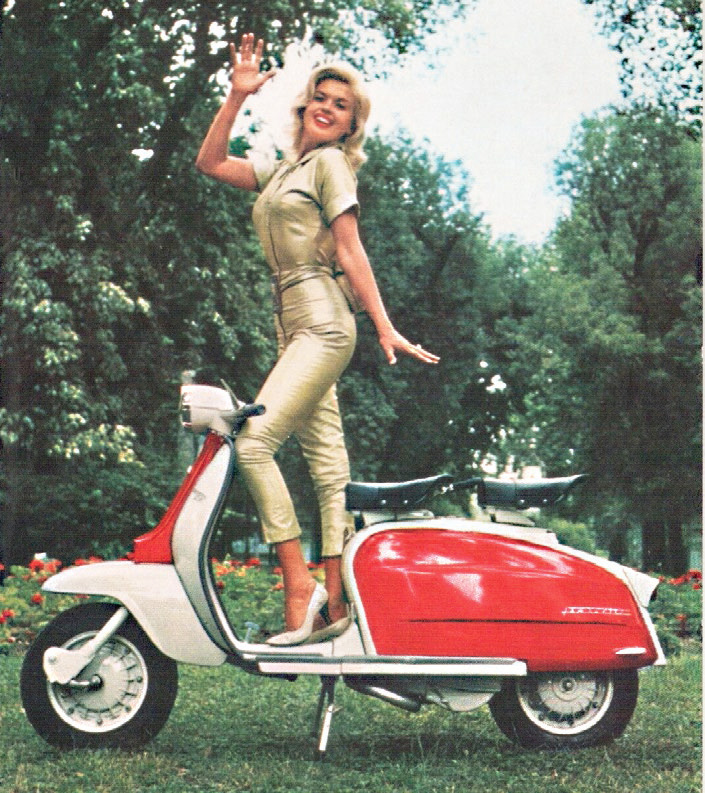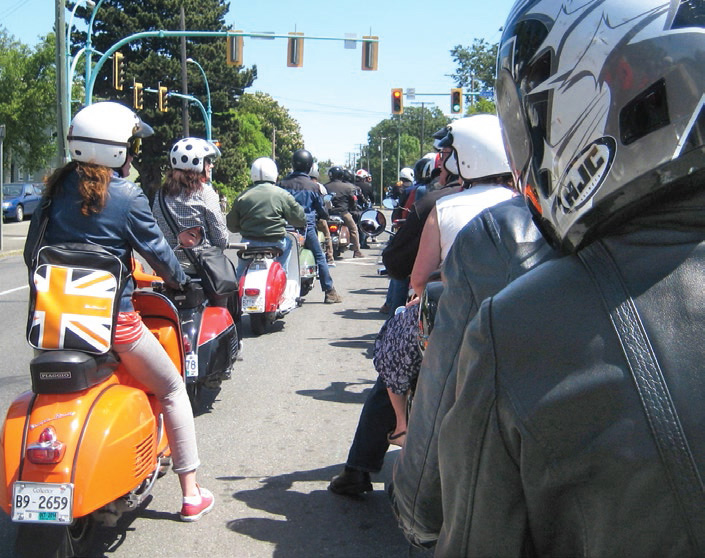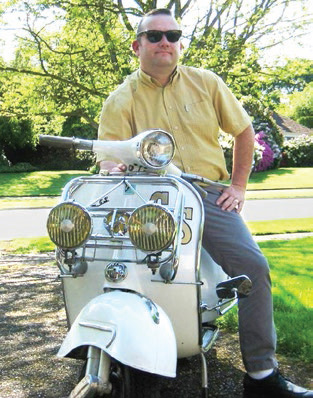Scooters are for Riding - Page 2
 |
The scooter "was self contained without the fuss and hassle. It was light and nimble. You could take it anywhere," says Dean Seven, a rider from San Rafael who's director of marketing for Bello Moto, a San Francisco firm that imports vintage bikes from Italy and services them. Bello Moto has a public showroom in San Francisco filled with vintage scooters.
The open seating attracted women, who could ride them in skirts, Barthlow says. That was one other modern aspect of the bikes, he says, providing women with a touch more freedom.
Vespas were first sold in 1946 and won immediate success. The first Lambrettas, manufactured by Innocenti S.A., hit the market a year later.
Jason Anderson, a San Francisco architect who owns a 1966 Lambretta Li 150, says there are clear parallels between the rise of the scooter and homebuilder Joe Eichler. Both motor scooters and Eichler homes got their start about the same time and in similar social and economic circumstances—Vespas in 1946, Eichlers in 1949.
 |
|
|
"The story of the scooter resembles the story of Eichler in some ways," Anderson says. "It's how Eichler was answering the need in post-World War II United States to bring modern aesthetics to the general public, where before it had only been obtainable with unique, one-off architectural homes."
"In the postwar, with changes in transportation, scooters were perfect. With Piaggio there was also that same dedication to the aesthetics of what was designed as a mass-produced vehicle."
In Italy after the war, roads had been ruined, cars were few, and people lacked money. In the United States, GI's and their wives were giving birth to 'Baby Boom' toddlers, and housing was scarce.
"The motor scooter was designed to be accessible and affordable to average people," Jim Palmer says. "These were the things Eichler had in mind when he was selling houses, right? I see a lot of parallels."
 |
"Italy is known for being very stylish in anything they do," says Llamas. "That certainly expresses itself in scooters. Look at the ones made by American or German companies. They look horrible."
"There's a simplicity to the scooter that can be found in mid-century modernism, a beautiful timeless quality that has inspired some designers to this day," Janel Holiday says.
Today the scooter phenomenon has spread worldwide, with clubs and collectors on every continent. They are devoted to vintage scooters, primarily Vespas and Lambrettas, from the end of the 1940s into the mid- or late-1970s.
Nationwide, Seven says, there are more than 5,000 riders of vintage scooters, though he says this is an estimate. In the Bay Area, he says, there are several hundred.
 |
|
|
"The old ones were made to be maintained," says Paul Sachelari, who owns three Lambrettas and five Vespas and lives in a mid-century modern architect-designed home in Oakland. "They're super-rugged. They were made when roads were bad and people didn't have much money. They were made to be fixed."
There are differences between Vespas and Lambrettas in structure, looks (especially early on), and how they ride. That's due in part to the history of each firm, which designed bikes that capitalized on their expertise.
"Vespa made essentially a one-piece stamped metal plate" that runs from toe to tail and encases the engine, says Llamas. "The Lambretta used a tube of steel as the spine to which everything got bolted on."
The name Vespa, which means 'wasp' in Italian, refers to the shape of the bike. It's broad in the rear, where the engine is housed; narrowing in the center, where the rider sits in an open area; and broad again in the front, where the headset holds the steering, throttle, and brake; and the leg shield protects against dirt and bugs.




